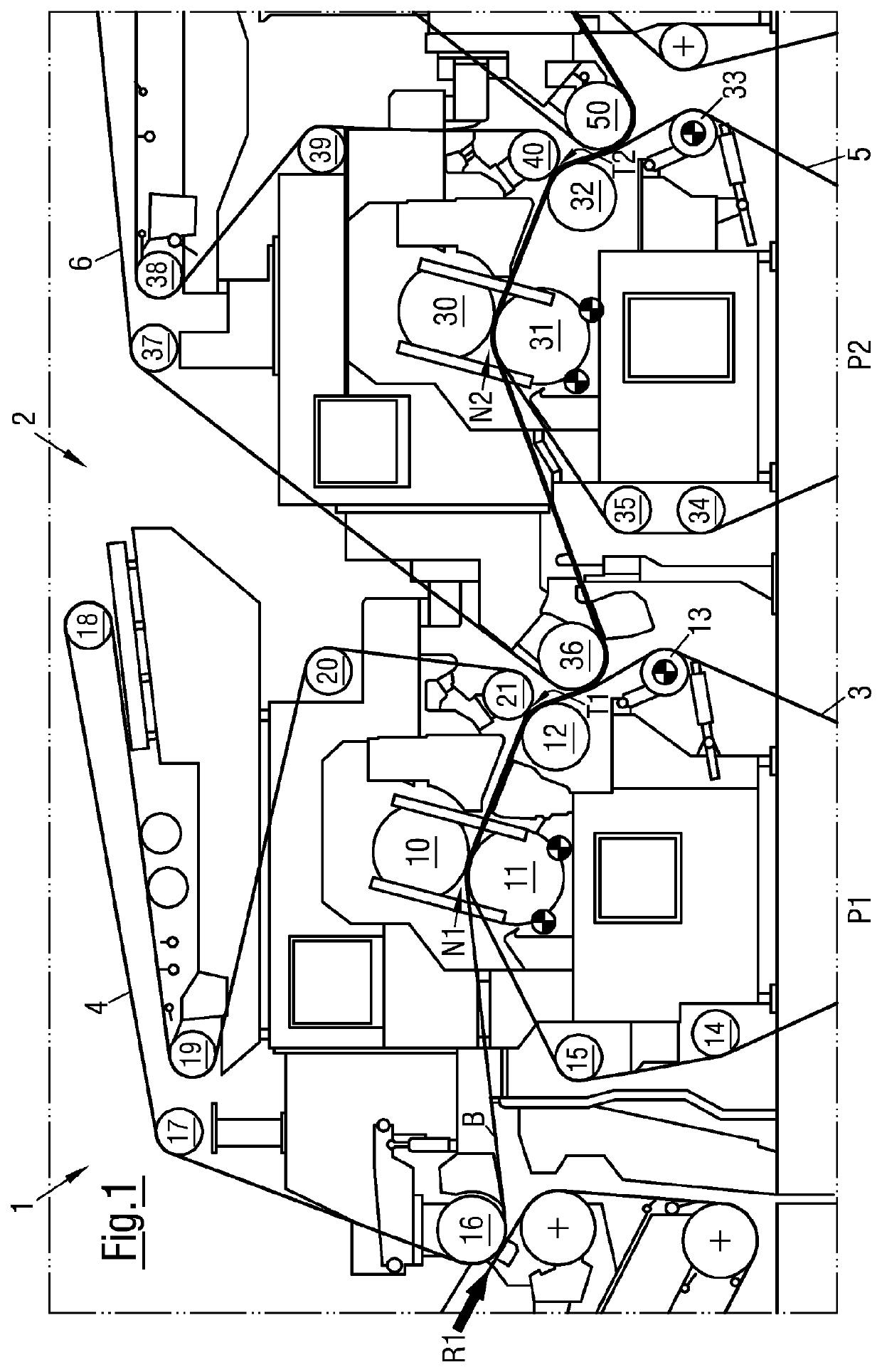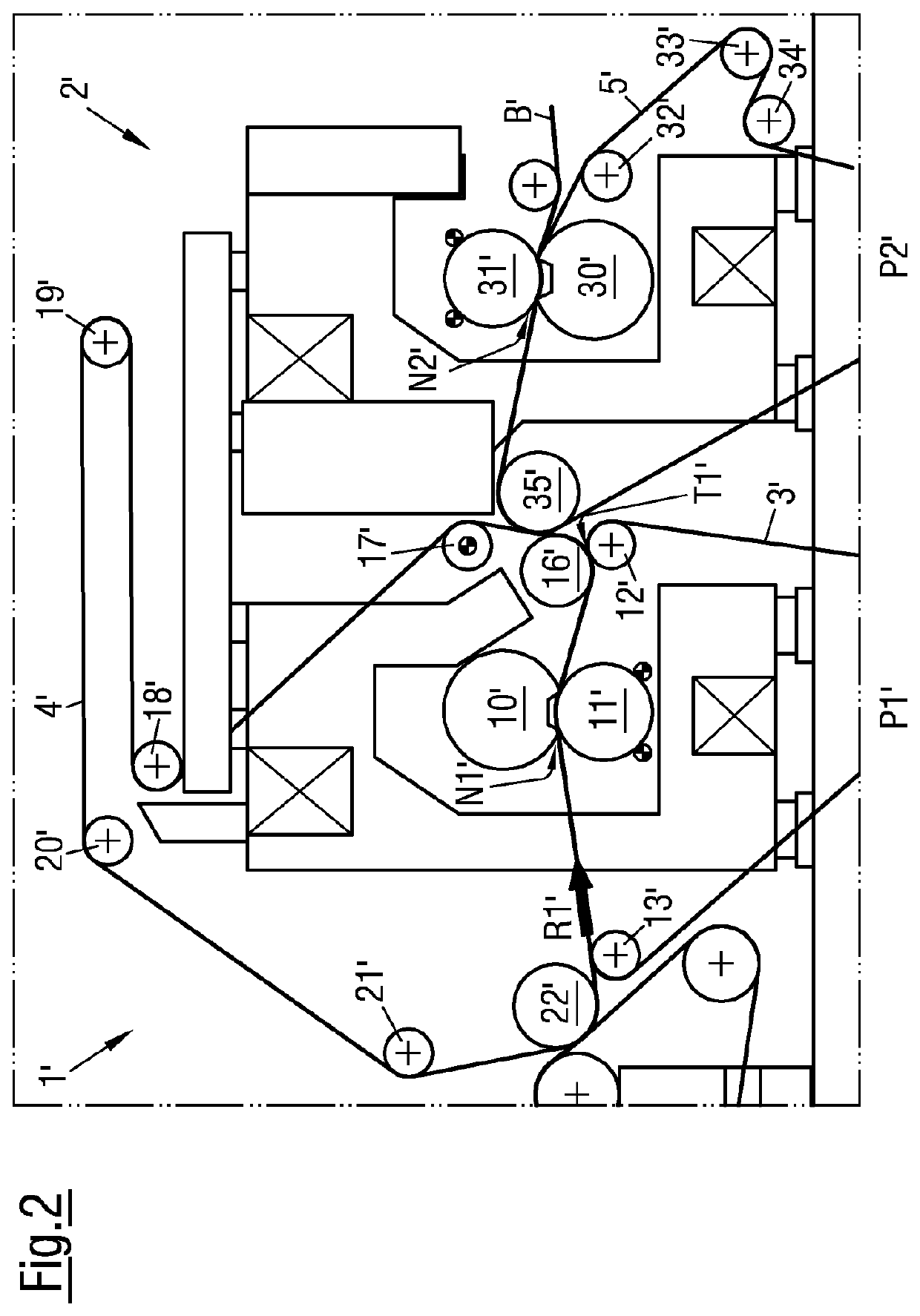Press for a machine for producing a fibrous material web
a technology of fibrous material and press, which is applied in the direction of machine wet end, textiles and papermaking, papermaking, etc., can solve the problems of inability to separate the web by means of a cost-effective suction box, inability to use a relatively expensive manifold for suction, and inability to meet the needs of production and use. achieve the effect of better distribution of rotary drive power
- Summary
- Abstract
- Description
- Claims
- Application Information
AI Technical Summary
Benefits of technology
Problems solved by technology
Method used
Image
Examples
first embodiment
[0030]Referring to the drawings and more particularly to FIG. 1 there is shown a press 2 of a machine 1 (not shown in its entirety) to produce a fibrous web B, is described with reference to FIG. 1. In the present embodiment of the invention, press 2 is a so-called tandem press with two consecutive press stages P1, P2.
[0031]Machine 1 in the present embodiment of the invention is a paper machine for the production of a paper, cardboard or pulp web in the form of a fibrous web B. Fibrous web B can be a packaging paper web or a cardboard web and is run in press 2 at a web speed of ≥1100 m / min, preferably ≥1150 m / min and even more preferably ≥1200 m / min in a direction of web travel R1.
[0032]In its first press stage P1, press 2 has a first press nip N1 which is formed between press roll 10 and a counter press roll 11 of first press stage P1 in order to guide fibrous web B through, in a dewatering manner. In other words, first press stage P1 of press 2 is equipped with press roll 10 and ...
second embodiment
[0043]According to another embodiment of the invention a press 2′ in a machine 1′ (not shown in its entirety) for the production of a fibrous web B′ is described below with reference to FIG. 2. In the invention, press 2′ is also designed as a tandem press with two consecutive press stages P1′, P2′.
[0044]Machine 1′ in the present embodiment of the invention is a paper machine for the production of a paper, cardboard or pulp web in the form of a fibrous web B′. Fibrous web B′ is preferably a packaging paper web or a cardboard web and is run in press 2′ at a web speed of ≥1100 m / min, preferably ≥1150 m / min and even more preferably ≥1200 m / min in a direction of web travel R1′.
[0045]In its first press stage P1′, press 2′ has a first press nip N1′ which is formed between press roll 10′ and a counter press roll 11′ of first press stage P1′ in order to guide fibrous web B′ through, in a dewatering manner. In other words, first press stage P1′ of press 2′ is equipped with press roll 10′ and ...
PUM
 Login to View More
Login to View More Abstract
Description
Claims
Application Information
 Login to View More
Login to View More - R&D
- Intellectual Property
- Life Sciences
- Materials
- Tech Scout
- Unparalleled Data Quality
- Higher Quality Content
- 60% Fewer Hallucinations
Browse by: Latest US Patents, China's latest patents, Technical Efficacy Thesaurus, Application Domain, Technology Topic, Popular Technical Reports.
© 2025 PatSnap. All rights reserved.Legal|Privacy policy|Modern Slavery Act Transparency Statement|Sitemap|About US| Contact US: help@patsnap.com


